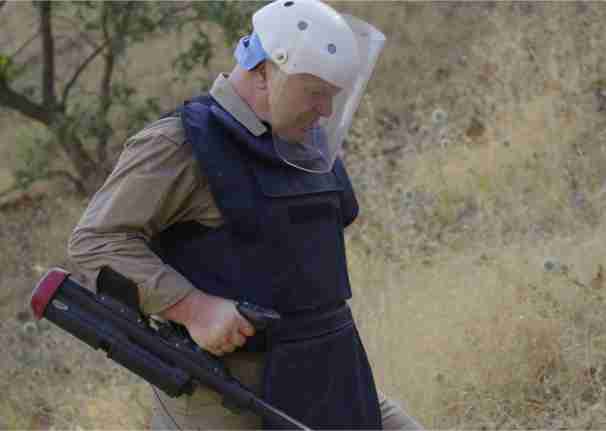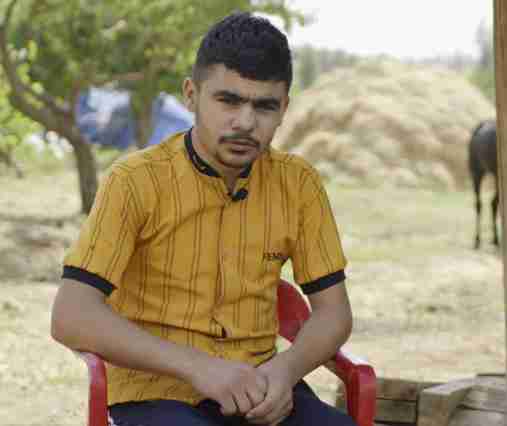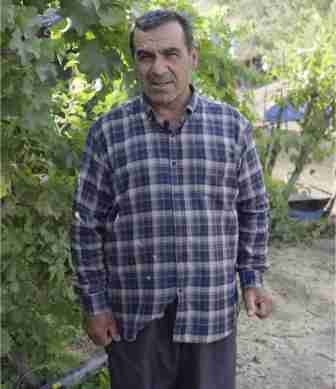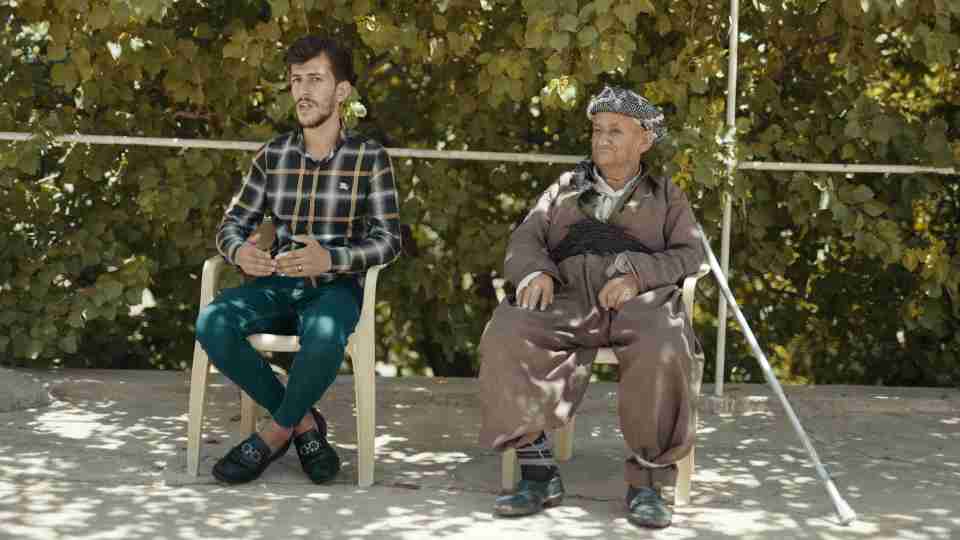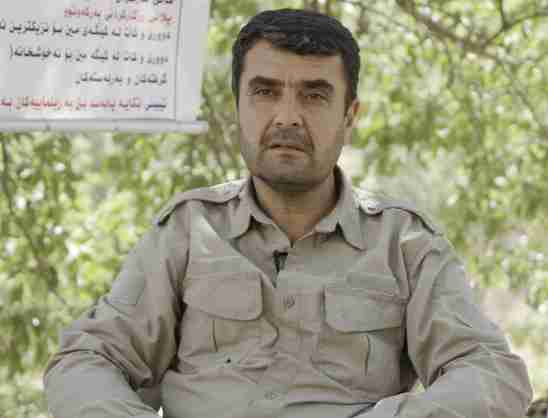Mines in Soran
In the training room for the
Mine Action Agency in Soran, there’s a long table. It spans the room, covered
by a collection of different mines from the area. They come from all over the
world, many were made in countries now providing aid to the region. Italian,
Russian and American explosives, now defective, serving as examples for
deminers learning how to detect and clean Soran and the villages that surround
it.
The display showcases mines from different time periods as
well, some were manufactured and planted nearly half a century ago, some of the
explosives remain in production to this day. Soran’s history remains buried in
its soil. Now, the mines in Soran are embedded in the DNA of communities in the
area. They have affected every generation still living there.
|
|
|
Mukhlis Sofi providing a
demining demonstration outside of Soran. |
Mukhlis Sharif Sofi, the Operations Manager of the Agency
walks down the table presenting the different types of mines and their origins.
As his presentation continues, the table’s timeline arrives closer to the
present day and the mines become more contemporary and advanced. He begins with cruder models from the ‘60s and
70’s before arriving at plastic models, harder to detect, intended for tanks
and larger vehicles.
His agency’s mission is slow-moving, and as time has passed
the conversation has progressively evolved into one concerning economic
viability as well as safety. “The demining process used to go very well, but in
2014 onwards, when the […] financial crisis erupted in our country, that’s why
there were some shortcomings,” he explains.
“Otherwise there is faith and the process was going well, but because of
coronavirus and financial problems, there were some problems in the demining
process.”
But the publicly funded Mine Action Agency in Soran, has
faced increasing skepticism from the citizens in area over time. Anxiety has
boiled over into frustration, directed at the mines’ continued presence. Last
Newroz, Arafat Haji, a 13-year-old living on an orchard in nearby Shiwan, lost
his foot while getting food for his friends during the celebration.
|
|
|
Arafat Ahmad Haji lost his leg
in 2022 near his family’s farm |
The incident served as a perfect example for many of the
issues with mines. Arafat wasn’t aware the area wasn’t cleared, there were no
signs posted to indicate danger. The area where he nearly killed was in a
valley, the mine had likely been washed downhill by the rain.
Growing up in Shiwan, Arafat had been educated about the
mines in his area from an early age, “I have been scared of mines ever since I
was a kid, because it’s a dangerous weapon and it’s hard to detect. And the
places that have mines, they should put up signs so that people don’t go to
those places.”
One of the team leaders of the agency, Sardar Fatah Sadq
believes that it was likely there were signs in the area that Arafat was
walking through. “Regarding permanent signage, all the minefields are marked,
but the signs are metal, and people, teenagers take it and sell it.” He
explains. “There are some minefields that are steep and there is a valley.
Water accumulates, the mines move down to the lower side of the minefield. What
happened in Shiwan the mine had moved down with water and that incident had
happened the child was injured.”
|
|
|
Arafat’s father Ahmad Haji Bazit |
But the incident displayed another problem with the area’s
demining process. Arafat’s father, Ahmad Haji Bazit expressed frustration not
just at the sluggishness of the demining process, but the lack of follow-up from
the local authorities regarding his recovery has also added to his frustration
with the situation.
“They mark one place, and that area, which is one kilometer,
takes them seven years to clear. If it takes them seven years, there are seven
more kilometers in that area, until they clear out that area thousands of
others will be hit by mines,” he says.
“But the government is responsible. The mayor came, the head
of the mine organization came, they said this is the last time we will mark
this place, we will not let anyone else come close to where Arafat was injured
by the mine. Until now, the mayor hasn’t come, the organizations haven’t, not the
government, no follow-up. No one came. It was that moment when the incident
happened, and that was it.”
Ahmed’s anger is echoed in other parts of the Soran area. In
Jilia, another village nearby, a similar sentiments are expressed by Hasm Sad
Sideq, grandson of Sideq Piro Ali. Sideq also lost his leg herding sheep over a
decade ago on a nearby hill common for grazing. Now unable to speak for a very
long time as his years have advanced, his grandson spoke on his behalf.
“His leg has doubled his hardship, he has a lot of pain daily
because of his leg. Often standing on his leg for maybe 10 minutes he feels
pain,” “That’s why he can’t go out of his house, he has to stay home, because
[he can’t] stand too much on his leg because of his mine injury,” Hasm says. “He
was damaged, psychologically and in every other aspect, my grandfather is a
mine victim.“
Jilia’s landscape is similar to Shiwan’s. The entire area’s
topography is mountainous, still vaguely green, despite the mid-summer drought.
There are no roads leading to Sideq and Hasm’s farm that are particularly
straight or flat. It’s a perfect landscape for raising livestock and
agriculture, aside from the clear danger that remains scattered in the terrain.
“It’s a strategic area that people visit a lot to collect spring
vegetables and raising livestock, but we can say this village isn’t even useful
for itself because mines are planted all around this village,” Hasm explains.
He points behind him and says there are still mines three kilometers away from
where he and his grandfather are currently sitting.
|
|
|
|
|
Hasm tells his grandfather, Sideq’s
story at their home in Jilia. |
“In this village we have both physical, material and even
psychological loss, and the village we are in now there have been 17 mine
victims, as well as over 30 people who have been injured by mines and have been
handicapped.”
In efforts to demarcate the unsafe areas, the farmers in and
herders in the village came together to construct a fence around the spots
where there are still explosives. The money for the fence came out of the
villagers’ own pockets, no aid was provided from any organization or
governmental agency. Repairs must be done regularly on the fence at the risk of
the villagers as well.
“Concerning the mines, the organizations and the Mine Action
Agency have only been talk. Or they have played their role indirectly, they
make reports and they answer village people in [Facebook] comments,” Hasm says.
Mukhlis Sofi acknowledges the cancerous effect of the mines
on Soran’s economy. “The people, especially the villagers, they are close to
those minefields they can’t use their lands, if they can use their lands, it
can be very beneficial for agriculture, for tourism, and even for the
government for community service projects.”
But he also notes that his agency’s efforts have reached a
wall. Funding issues plague Soran’s demining agency. The staff shortages and
lack of resources have taken an enormous toll on the organization. Most
significantly, the contracts for the deminers at the agency have serious
limitations. The contracts will not cover injury. Dangers like mines, or even
other hazards such as falling down the side of accidents are at the expense of
the miners. Contracts from injury may be cut to avoid extra expense.
Ayub Abdulla Hussein also serves on Sofi’s team, “I have
been working here for 20 years as a deminer. I attended a team leader course in
2009 and I become the head of the department. Now I’ve been
|
|
Demining team member Ayub Abdulla Hussein |
working for 20 years at the Mine Action Agency, I have no
rights,” he says. “I have a family […] I have no apparent rights whether I will
get retired or not.”
On top of the financial shortcomings, the slow-moving nature
of the demining is plagued by a lack of detailed knowledge as to where the
mines are even located. During the regime change in 2003, the maps delineating
the exact minefield locations were lost. There are 50 million square meters of contaminated
with mines in Kurdistan. But even this is an approximation, it only accounts
for registered areas, and there are still large tracts of land that haven’t
been explored.
Ahmad Haji Bazit stands in his orchard, not far from where Arafat
is sitting. For him and his family, the mines have come to represent more than
just a pastime of intermittent conflict, but an ongoing systematic failure that
has kept their risk real and close to his home for him and his son’s entire
lives.
“Every year, every time, there are mine victims, whether
it’s humans, animals, tourists,” he says. “This is always there for us.”

